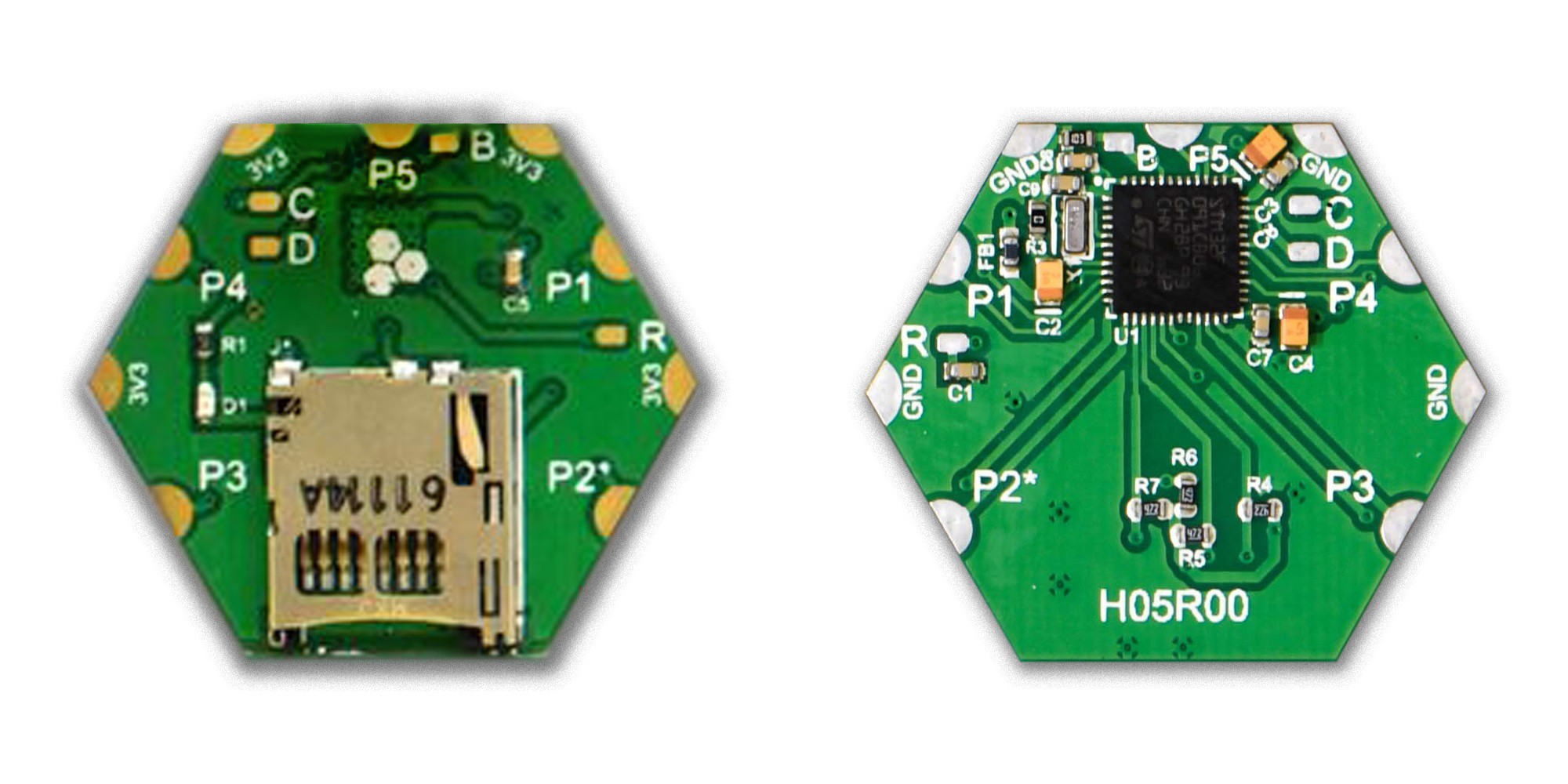
H1BR60 is a nifty little SPI-based, micro-SD card module based on STM32F0 MCU and running Fatfs file system. It is part of the upcoming Hexabitz modular prototyping system.
- Use as a stand-alone data-logger or easily integrate with other hardware via serial interfaces.
- Setup and control logging via a Command Line Interface (CLI).
- Log digital inputs, memory locations, program variables, serial streams and button actions.
- Start multiple simultaneous logs with different log variables each.
- Firmware has Fatfs embedded file system and advanced logging functionality (event logs, rate logs, sample-based, time-based, sequential naming, etc.)
- Supports SDHC micro-SD memory cards (FAT32, up to 32GB size).
- Program advanced C code with our easy-to-use APIs.
- Connect to external hardware or combine with other Hexabitz modules!
Note 1: This module was named H05R00 before.
Note 2: This module does not ship with a micro-SD card.
Technical Specifications
- Five array ports and four power ports (+3.3V and GND).
- Access to 5xUART, 1xI2C, SWD, BOOT0, RESET.
- SPI-connected microSD memory card for SD and SDHC cards with full integration of Fatfs file system.
- Molex 502570-0893 microSD push-push connector with card detection.
- STM32F091CBU6 MCU.
- 8MHz external oscillator.
Physical Properties
- Shape: Hexagon
- Size: 3 cm short diagonal
- Area: 7.8 cm^2
- Soldermask Color: Dark green
- Finish: ENIG (gold) or HASL-LF (tin)
Documentation
Design Files
- Module schematics [PDF]
Source Code
- H1BR60 module code [repository]
FAQ
Q: How do I use H1BR60 to add logging capability to my projects?
A: H1BR60 module logs all sorts of signals connected to its array ports. You can stream digital data from external hardware using serial ports (UART), connect digital sensors (3.3V max) directly, connect external switches of any type (mechanical, optical, magnetic) or momentary and toggle buttons.
Q: Can I log same signal in different ways?
A: Yes! You can start two simultaneous logs of different types (rate or event) and log same or different signals.
Q: Can I log a complicated condition/combination of signals?
A: Yes! You can write C code to combine signals in complex ways and write the output to an internal RAM buffer. This buffer / memory location can then be logged either on rate- or event-basis.
Q: What's the maximum logging rate in H1BR60?
A: Maximum logging rate is 1KHz. However, it depends on number of simultaneous logs and number of variables per log. Usually it is several hundred Hz in complicated scenarios.
 Hexabitz
Hexabitz
Discussions
Become a Hackaday.io Member
Create an account to leave a comment. Already have an account? Log In.